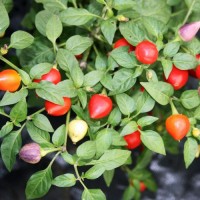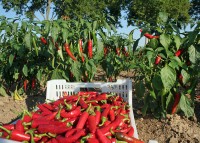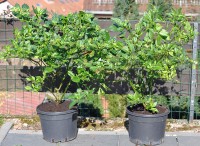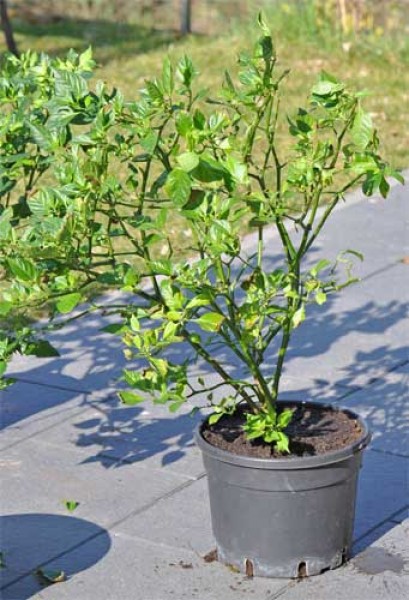
Cutting back Chili Plants
Instructions on cutting back chili plants in the summer or for overwintering. Tips and Tricks.
There are few topics in the area of chili cultivation where opinions diverge so strongly. Some swear by cutting back chili plants, while others demonise it. We will try to shed some light on this question.
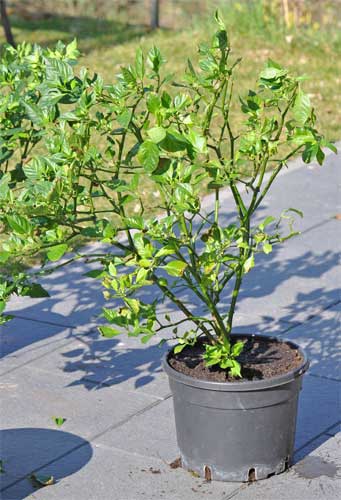
Image: overwintered Trinidad Scorpion Butch T in Spring 2014
Chili plants in summer
There are chili types, in particular the Capsicum frutescens species, which tend to shoot up very strongly. To this group belongs, for example, the Tepin original chili type, which grows wild in the Sonora Desert of New Mexico and is dispersed by birds. Plant shoots which shoot high up into the air should be capped at a height of approx. 40-50 cm, always above the growing nodes (this is where the leaves grow, and after capping, the new shoots). This will result in bushier plants with more flowers, which will in turn result in a larger harvest. However, cutting back is not an absolute must ! If you have fun with it, you can, with a little skill, create some interesting shaped plants, while not always achieving a better harvest. Incidentally, pinching off, as is done with tomatoes, should absolutely not be carried out with chillies. Important: A lack of light can also result in the “stalking” of chili plants. The only thing that helps in this case is more light.
Overwintering
In principle, chillies are perennial plants and can therefore be overwintered. However, it does not make sense for many fast-growing varieties (Jalapeno, Serrano). Even in tropical growing regions, these are only grown as annuals. However, for rare varieties or those that are difficult to grow from seed, overwintering can be worthwhile. These include wild forms, such as chiltepin or rocotos, which are well suited for perennial cultivation. Some varieties also bear more fruit in the second year than in the first. Choose only the strongest plants for overwintering.
The plants can be cut back either in autumn or in the spring. We recommend cutting back after the harvest, as the plants are easier to handle and make less mess. Tips on overwintering can be found here. Cut the main stem approx. 30-40 cm over the pot and ensure that the plant has a bushy form. LFor larger plants, only shorten the branches by about 5 to 10 cm so that the plant does not sprout excessively. Radical pruning is also possible: this leaves only a y-shaped stem for overwintering. It is important that you always cut just above a growth node.
If you would like to cut back your plants in spring, then proceed in the same way. Some branches will already be dead, and these should, of course, be removed.
A topic which should not be underestimated is the issue of pest control. At overwintering temperatures of 10°C to 15°C you should not usually have problems with pests. However, in warm living rooms the overwintering process does not work as well, and the chance of aphids and other creatures is very high. In warm rooms (approx. 20-25°C), you should only place cut back and sprayed plants. Treat the plants at least 2x with an ecological and quickly degradable pesticide. Neem oil may be used as an alternative.
Conclusion: In comparison to other plants, the cutting back of chili plants is not an art, instead it helps the plants to grow bushier in summer. A radical cutting back in autumn makes the overwintering process easier.





